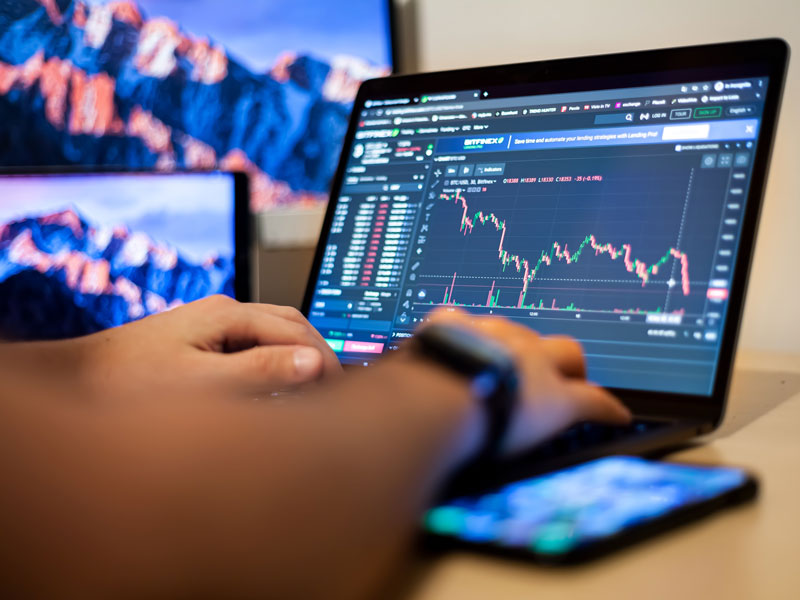
Learn Forex Trading Step by Step: A Comprehensive Guide
Forex trading can seem daunting for beginners, but with the right knowledge and approach, anyone can succeed in the foreign exchange market. This guide will take you through the essential steps to learn forex trading, ensuring you understand the tools, strategies, and intricacies of the market. Whether you are a complete novice or looking to enhance your skills, by the end of this article, you will have a solid foundation in forex trading. To kick things off, discover the learn forex trading step by step Best Vietnamese Brokers that can help you navigate the market effectively.
1. Understanding the Basics of Forex Trading
Forex, or foreign exchange, refers to the global marketplace for buying and selling currencies. Unlike stock markets, the forex market operates 24 hours a day, allowing traders to engage in currency exchanges at any time. It is essential to understand key terms such as pips, currency pairs, spreads, and leverage. A pip is the smallest price move that a currency can make, while currency pairs (like EUR/USD) represent the value of one currency against another. The spread is the difference between the bid and ask price, and leverage allows traders to control larger positions with a smaller amount of capital.
2. Choosing the Right Broker
Finding a reliable forex broker is crucial for your trading journey. Your broker acts as an intermediary between you and the forex market. Look for a broker regulated by a reputable authority, offers competitive spreads, and provides a user-friendly trading platform. Consider your trading style as well — whether you prefer short-term trading like scalping or longer-term strategies. Make sure the broker has a demo account to practice trading without risking real money.
3. Setting Up Your Trading Account
After selecting a broker, the next step is to set up your trading account. Most brokers offer different types of accounts, including standard, mini, and micro accounts. The account type you choose may depend on your trading budget and strategy. Ensure you also understand the deposit and withdrawal methods offered. Generally, setting up an account involves providing some personal information and verifying your identity.
4. Learning Technical Analysis
Technical analysis involves analyzing historical price data to forecast future price movements. Traders use charts and various technical indicators to identify trends and make informed decisions. Key tools include support and resistance levels, moving averages, relative strength index (RSI), and Fibonacci retracement levels. Familiarizing yourself with these concepts can give you the edge needed to make successful trades.
5. Developing a Trading Strategy
A solid trading strategy is essential for consistent success in forex trading. Your strategy should outline your trading goals, risk tolerance, and specific rules for entering and exiting trades. The most popular strategies include day trading, swing trading, and position trading. It’s vital to backtest your strategy against historical data to gauge its effectiveness before implementing it in live markets.

6. Practicing with a Demo Account
Before risking real money, take advantage of a demo account provided by your broker. A demo account allows you to practice trading in a risk-free environment using virtual funds. This stage is crucial for honing your skills, testing your trading strategies, and becoming familiar with the trading platform. Spend sufficient time in the demo environment until you feel confident in your trading abilities.
7. Understanding Risk Management
Risk management is a critical aspect of trading that many beginners overlook. A good rule of thumb is to risk only a small percentage of your trading capital on a single trade (typically 1-2%). Employing stop-loss orders can help limit your losses and protect your account from significant drawdowns. Additionally, ensure that your rewards outweigh your risks by maintaining a favorable risk-to-reward ratio in your trades.
8. Staying Informed about the Market
The forex market is influenced by a wide array of factors, including economic data, political events, and central bank policies. Keeping up with global news, financial reports, and market analyses can significantly impact your trading decisions. Tools such as economic calendars can help you identify important events that might affect currency movements.
9. Emotional Discipline in Trading
Trading can be an emotional roller coaster. Fear and greed are two common emotions that can cloud your judgment and lead to poor trading decisions. Cultivating emotional discipline involves sticking to your trading plan and avoiding impulsive reactions to market fluctuations. Consider maintaining a trading journal to track your trades, decisions, and emotional states to help improve your performance over time.
10. Continuously Learning and Adapting
Forex trading is constantly evolving, and successful traders prioritize continuous learning. Join trading communities, read books, take online courses, and stay updated with market trends to enhance your knowledge and skills. As you become more experienced, be open to adapting your strategies based on market conditions and personal growth.
Conclusion
Learning forex trading step by step requires patience, dedication, and a willingness to learn from mistakes. By understanding the basics, selecting the right broker, practicing with a demo account, and focusing on risk management and emotional discipline, you can build a solid foundation for your trading career. Remember, every trader was once a beginner, so embrace the journey and continue to strive for improvement on your path to becoming a successful forex trader.

